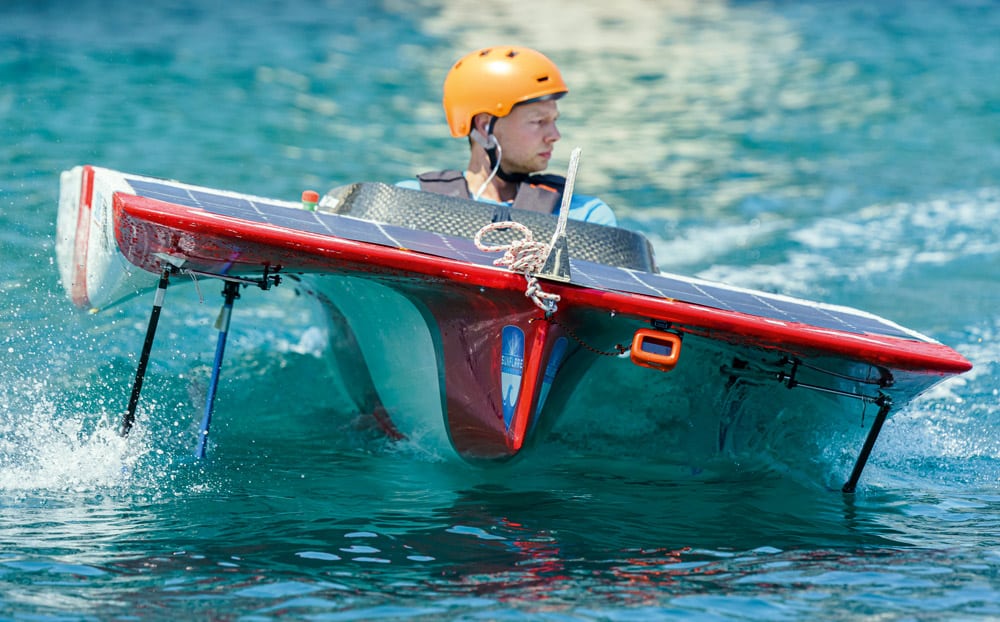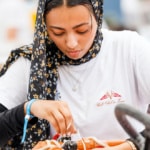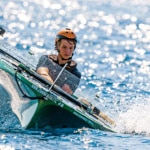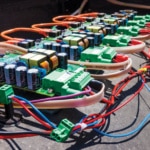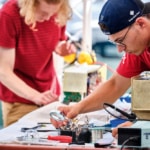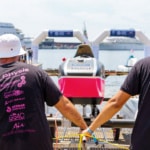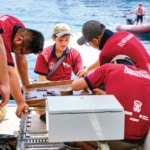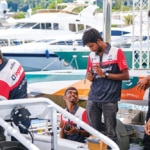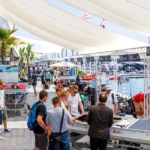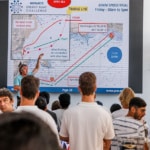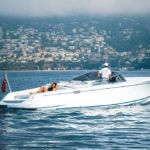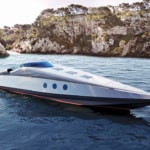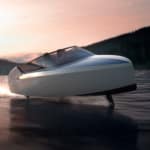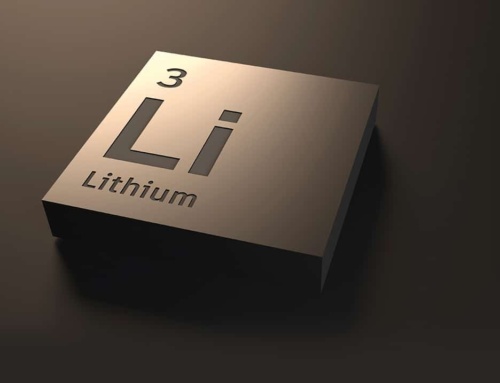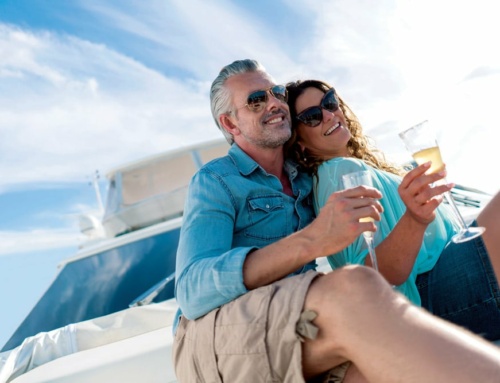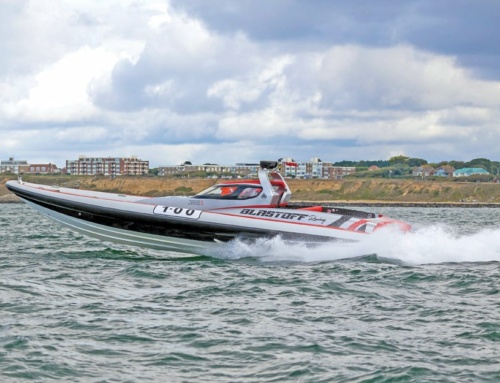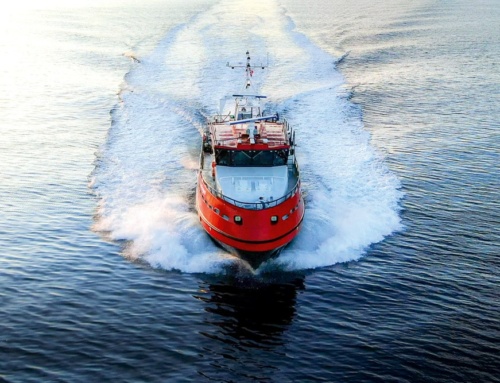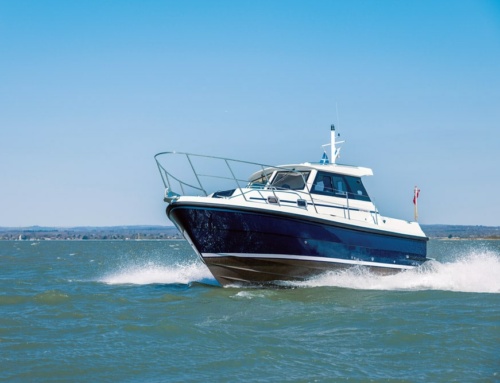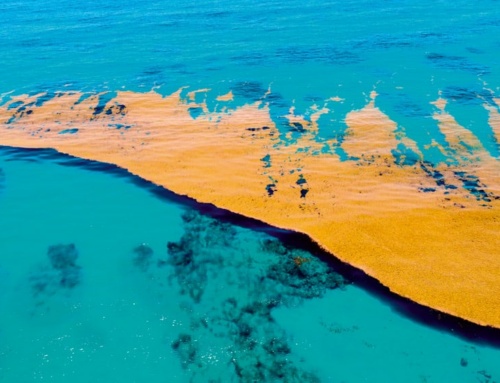PBR correspondent Richard Johnstone-Bryden gets a glimpse of a greener future as he reports on the 2022 Monaco Energy Boat Challenge, and the race teams’ intriguing, sustainable solutions.
The annual Monaco Energy Boat Challenge continues to build momentum with the 2022 event attracting a record 38 teams, including 27 universities, and 36 exhibitors from 21 nations who brought a combined fleet of over 50 boats to the Principality’s famous Port Hercule. This year’s debutants included teams from Canada, Peru and India, the latter being particularly notable as it was the nation’s first team to compete in an international motorboating event.
The annual challenge is a key element of Monaco’s wider vision for the future of yachting as part of its Monaco, Capital of Advanced Yachting initiative, which aims to establish the Principality as a centre of excellence for luxury yachting. The prestigious Yacht Club de Monaco (YCM), under the personal guidance of its president, HSH Prince Albert II, is playing a central role within these plans by hosting events that will help bring this vision to fruition, including the Monaco Energy Boat Challenge and the Monaco Smart & Sustainable Marina Rendezvous, and launching the Superyacht Eco Association (SEA) Index – the first carbon footprint calculator to allow a quick comparison of superyachts over 40m.
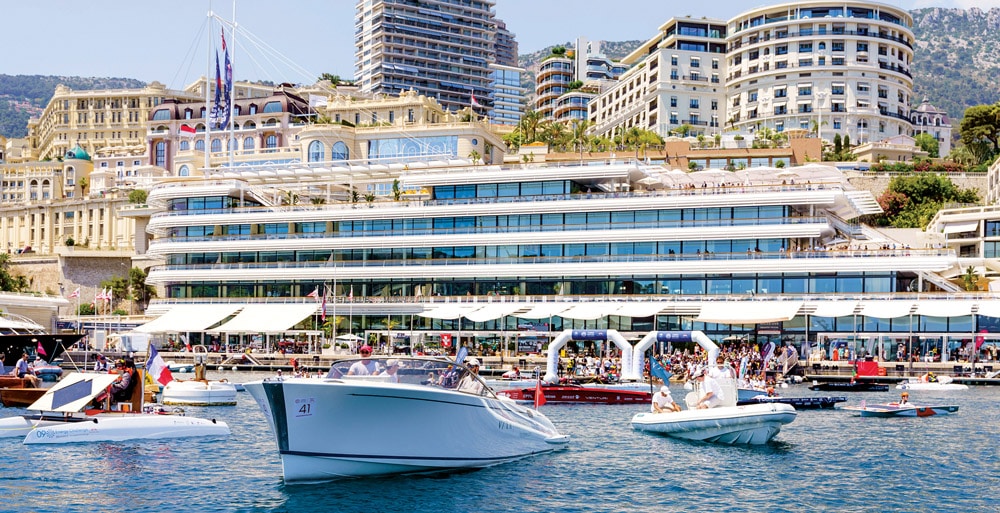
Some of the competitors gather in front of the Yacht Club de Monaco’s impressive clubhouse which was designed by the British architect Lord Foster.
Royal backing
As the first of these initiatives, the Monaco Energy Boat Challenge has been hosted by the YCM, with the support of the Prince Albert II of Monaco Foundation, since 2014, and was inspired by the Principality’s role in the development of speed boats in the early 20th century. This association began in 1904 when Monaco’s Port Hercule played host to its first exhibition and competition for motorboats. The event created enormous international interest with participants from the UK, the USA, France, Italy, Switzerland, Spain and Germany. The competitive environment created by these events helped to spur on further technological developments, with the likes of Fiat and Mercedes building boats to compete for the cash prizes of up to FRF300,000. These meetings soon grew in size with the inclusion of elegance contests for yachts and the first appearance of a seaplane in 1911.
Critical categories
The twenty-first-century successor to these early gatherings initially concentrated on solar energy before other combined solutions began to emerge as viable alternatives: several battery technologies, hydrogen, compressed air and potentially, in the near future, emission-neutral alternative fuels through to a boat powered solely by plastic waste with emissions capture. Hydrogen has gradually emerged as a high-performance alternative of choice that has led to some real innovations, such as the team behind the Portuguese Técnico Solar Boat in the Energy class, who developed a system for dehumidifying hydrogen and gases that pass through the fuel cell. All of these developments are driven by bringing young engineers from colleges and universities across the world together with key players in the yachting industry including Ferretti, Oceanco and MB92. They are challenged to develop alternative eco-responsible propulsion systems. Their ideas are then put to the test under real conditions in a series of competitive sea trials in Hercule Bay.
- The competitors prepare their craft in the paddock for the next race.
Three classes now participate within the challenge, namely the Solar, Energy and Open Sea classes. The Solar class has been a core part of the challenge since 2014 when 23 teams from 10 different nations competed against each other for the first time. The class attracted 14 teams this year, which participated in match race duels, a slalom contest and fleet races before the Dutch Sunflare Solar Team emerged victorious for a second year running.
The Energy class was introduced by the YCM in 2018 and is described by the club as a laboratory of innovation thanks to the competing teams exploring several avenues, from fuel cells to recovering heat to improve efficiency and artificial intelligence. The competing teams all use the same one-design catamaran hulls issued by the YCM and concentrate upon the development of the cockpit and the most efficient, durable propulsion system using a zero-emission energy of their choice, all from a given quantity of energy. The technical regulations for the class are reviewed on an annual basis, which led in 2022 to the doubling of the energy allowed on board to 10kWh and enabled the competing craft to reach higher speeds.
- The competitors prepare their craft in the paddock for the next race.
- The Solar Class competitors working on their craft in the paddock on the quay in front of the YCM’s clubhouse.
- The skippers briefing for the 16nm speed trial from Monaco to Ventimiglia.
Challenges and champions
Teams were also challenged this year to minimise their transport costs and environmental footprint, thereby leading to the creation of boats that are foldable or can be easily dismantled. The Dubai team managed to ensure their Sailing Tigers boat could be brought in their suitcases, while the Canadian team managed to pack the components of their boat, Exocet, into a 1.5m-long box for the transatlantic flight to France.
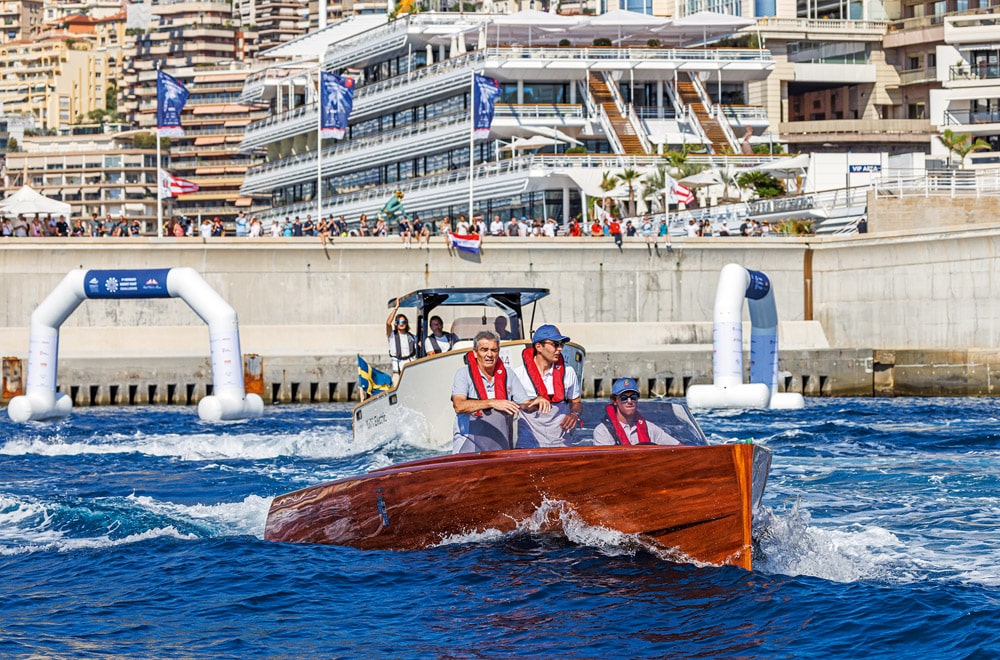
A crowd of spectators turned out to watch the YCM Speed Record with E-Next Villa d’Este (nearest) and the Swedish 8m Eelex 8000 of the Open Class in action.
The defending champions also prevailed in the Energy class, with the Italian team from the University of Bologna securing the honours for a second year running. Their successful craft, Uniboat, was powered by three energy sources: solar, batteries and hydrogen. Its hybrid system consisted of two lithium batteries that were charged up at the start of the race and then recharged via a hydrogen fuel cell. Five solar panels provided additional energy for the two electric motors that drove two 3D-printed propellers.
The Open Sea class is primarily dedicated to boats that are already on or about to enter the market and consists of craft that differ considerably in terms of size, power and characteristics. This year’s competitors included the Dutch TU Delft Hydro Motion Team, which set itself the ambitious target of designing, building and racing a hydrogen-powered hydrofoil in just 12 months. For the past 15 years, the Delft University of Technology has been running a team for 25 of its students, who put their studies aside for one year to design, build and race a new boat in just 12 months. On completion of this challenge, a fresh group of students are recruited to start work on the next year’s objective. The team initially focused its efforts on solar-powered craft before switching its attention to hydrogen power in 2020. The latest intake of students wanted to demonstrate the viability of using hydrogen power for long-distance voyages in a bid to convince shipping owners to make the switch to a sustainable source of propulsion. To achieve their goal, the students worked with a number of Dutch companies, such as Rondal, which helped with the construction of the hydrofoils, and Contest Yachts, where they spent 10 weeks building the carbon-fibre hull, caps, bulkheads, hatches and deck. The end result runs on 16kg of compressed hydrogen gas held at a pressure of 350 bar in two 2.3m-long tanks that are capable of storing enough energy to fully charge five Teslas. According to the team, this would provide enough energy for the boat to complete a voyage from Amsterdam to London. In essence, the team’s fuel cell uses hydrogen and oxygen to form water and generate electricity, which provides the power to the electric motor. They secured second place in the manoeuvrability challenge before encountering cooling problems during the 16nm race along the coast to Ventimiglia in Italy, which forced them to retire from the speed challenge. The team managed to identify the optimal settings for the cooling systems in time to win the endurance challenge, in which they used 8kg of hydrogen to cover 51nm – nearly double the distance of their nearest rival.
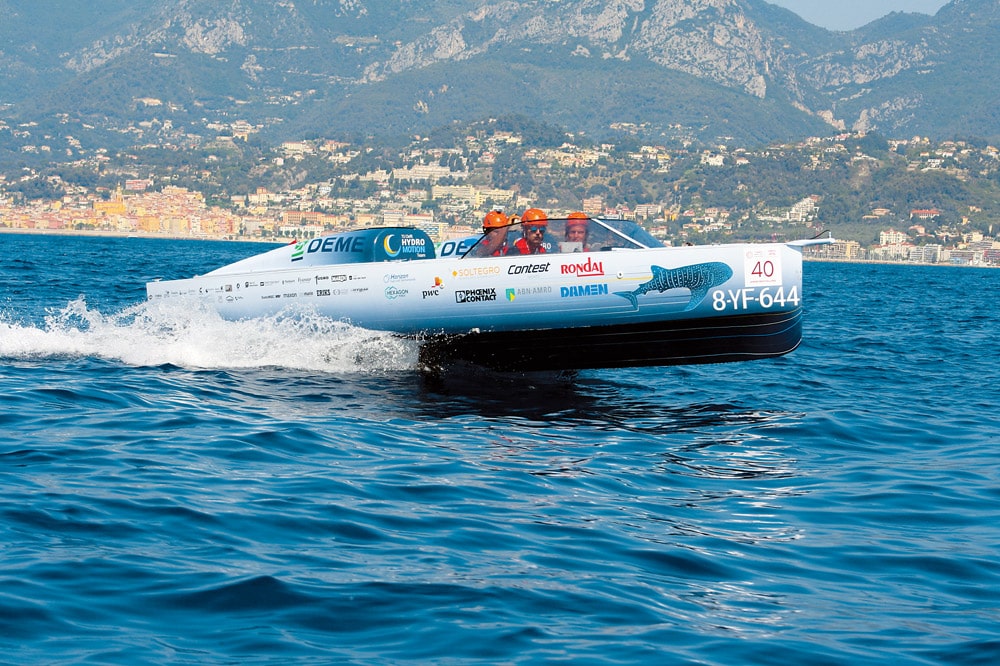
The Dutch TU Delft Hydro Motion Team with their hyrdrogen powered hydrofoil.
The design of the elegant 6.7m E-Next Villa d’Este was inspired by the runabouts of the 1960s. The four-year project to develop the craft was overseen by the Milan-based studio Frers and executed by Lake Como’s oldest boatyard, Cantiere Ernesto Riva, which was established in 1771 and is now run by the sixth generation of the Riva family in Daniele Riva. Weighing in at 1500kg, it’s capable of reaching a maximum speed of 26 knots thanks to its 100kW/h electric motor, while the 60kW/h batteries provide it with a five-hour range at 14 knots. This craft was commissioned by Lake Como’s prestigious luxury hotel Villa d’Este, which hosted its own event dedicated to the promotion of electric boating in September. Although the conditions off Monaco presented a very different challenge to the runabout’s native waters of Lake Como, the E-Next Villa d’Este performed well and was ranked fourth in the speed trials and third in the endurance test.
The design of Vita’s new 10.5m flagship, the Vita Lion, was also clearly inspired by the 1960s runabouts and is the result of an international collaboration. Its lines were drafted by the Milan-based BorromeodeSilva, while the UK-based Vita dealt with the engineering and propulsion, and the American superyacht tender builder Hodgdon Yachts took on responsibility for the construction. Powered by Vita’s latest all-electric V4 propulsion system, which delivers a peak power of 590hp (440kW), the carbon-fibre Vita Lion is capable of reaching a top speed of 35 knots, has a cruising speed of 22 knots and is compatible with fast DC charging to ensure it can be recharged within an hour. The spacious cockpit has seating for up to eight people, while the enclosed forecabin has a double berth and heads. The Vita Lion came first in the general ranking for the Open class, helped in part by its victory in the race to Ventimiglia.
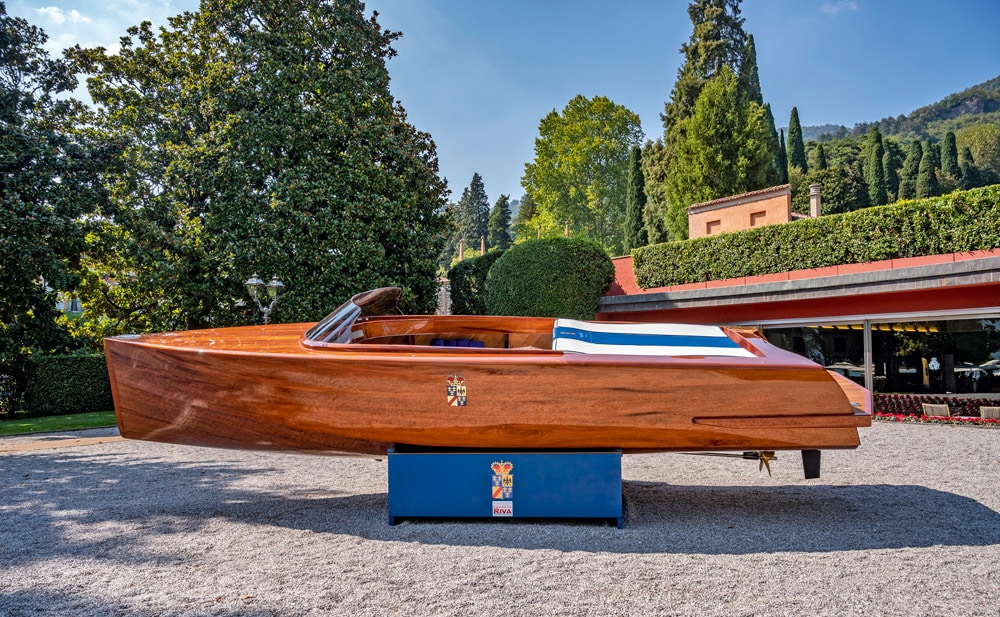
The E-Next Villa d’Este competed within the Open Class and is seen here on display within the grounds of the prestigious luxury hotel from which it takes its name on the banks of Lake Como.
Village of the future
Like the Open class, the concepts, equipment and boats on display within the exhibitors’ village provided a fascinating glimpse of the market’s current and near-future developments. The UK-based Optima Projects Ltd revealed their plans for a new 10m electric cruising boat. This specialist design and engineering consultancy is led by David Kendall, who has over 35 years’ experience in advanced engineering design analysis, FEA and FRP composite materials. His company’s new electric boat has been in development for the past three years and the first example is due to be launched in early 2023. The FRP foam sandwich ultra-efficient low-resistance hull will be propelled by a 40kW electric drive and a relatively modest 120kWh of batteries to deliver a cruising speed of 15 knots and a range of up to 200 miles. The boat’s striking lines are intended to combine the efficiency and stability of a multihull form within the beam of a monohull. Future owners will be able to undertake prolonged cruises without having to rely on shore-based charging facilities by opting for either integrated solar panels, a diesel generator or a hydrogen fuel cell.
- Vita’s new 10.5m flagship, Vita Lion, won the Open Class
- The German company Mayla Yacht unveiled their plans for the new Mayla 44
- The Edorado 8S electric hydrofoil sports boat.
The German company Mayla Yacht unveiled their plans for the new Mayla 44, which is designed to have a top speed of over 70 knots and a range of 270nm at 30 knots. The 13.4m carbon offshore cruising motorboat will be powered by two dual-core electric motors delivering over 2100hp (1600kW). The hull has been designed by Petestep to push the spray beneath the hull towards the stern. It is predicted that the hull deflectors will allow energy savings of up to 35%, lower slamming by 50%, increase stability and reduce noise when compared to conventional stepped hulls. The first example is currently under construction and due to be launched in early 2023.
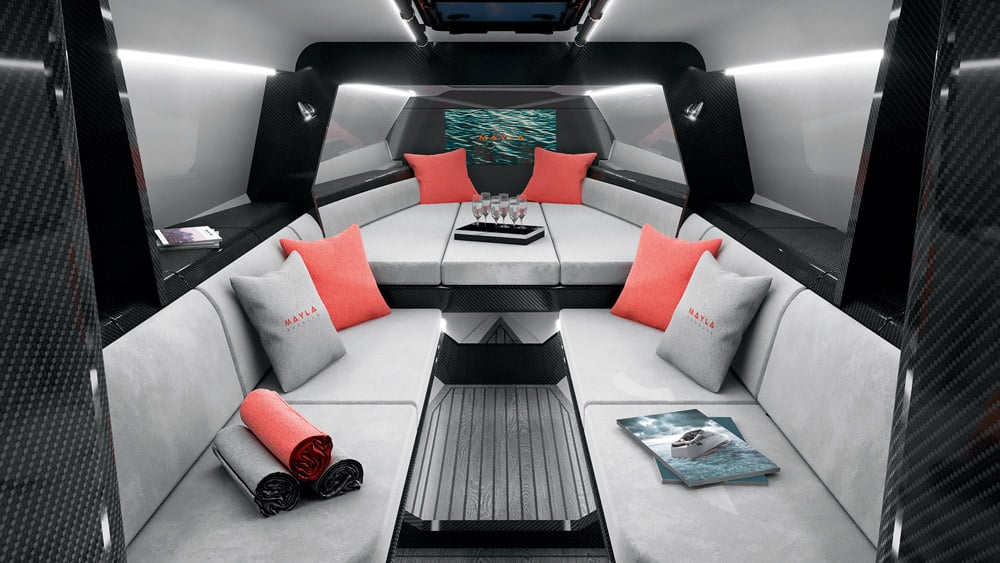
The Mayla 44’s main cabin can sleep 2 adults and 2 children
The co-founders of the Dutch company Edorado, Giel Groothuis and Godert van Hardenbroek, promoted their new 8.4m Edorado 8S electric hydrofoil sports boat. Designed by Ivo van Hulten, the 8S’s fully retractable hydrofoils are monitored by a proprietary automatic control system that adjusts the foil angles a staggering 100 times a second. The carbon-fibre hull’s draught is just 45cm when the foils are fully retraced and increases to 1.35m when they are deployed. The two 50kW electric motors and dual 40kWh batteries provide the 8S with a top speed of 38 knots and a 40nm range at 25 knots. The company has already built a full-scale prototype to test the retractable hydrofoils, and the standard 8S model will be available from spring 2023, with prices starting at €350,000.
The French-based Platypus Craft exhibited their plans for the distinctive 40ft semi-submersible Swordfish, which have been drafted by Samuel Guinefoleau of L2 Concept. The electric version of the trimaran is predicted to achieve a maximum speed of 40 knots, a cruising speed of 18 knots and a range of 115nm at 7 knots. It will be powered by two 500kW electric motors and 400kWh of batteries. A hybrid version is also available with two V8 900hp engines coupled to a pair of 80kW electric motors, which will enable the Swordfish to reach a top speed of 50 knots. The real eye-catching element of this design is the ability of the enclosed central hull to switch from surface to semi-submersible mode in seconds as it is lowered 2 metres underwater to provide the helmsman and up to seven passengers with a view of the seabed via the glazed bubble.
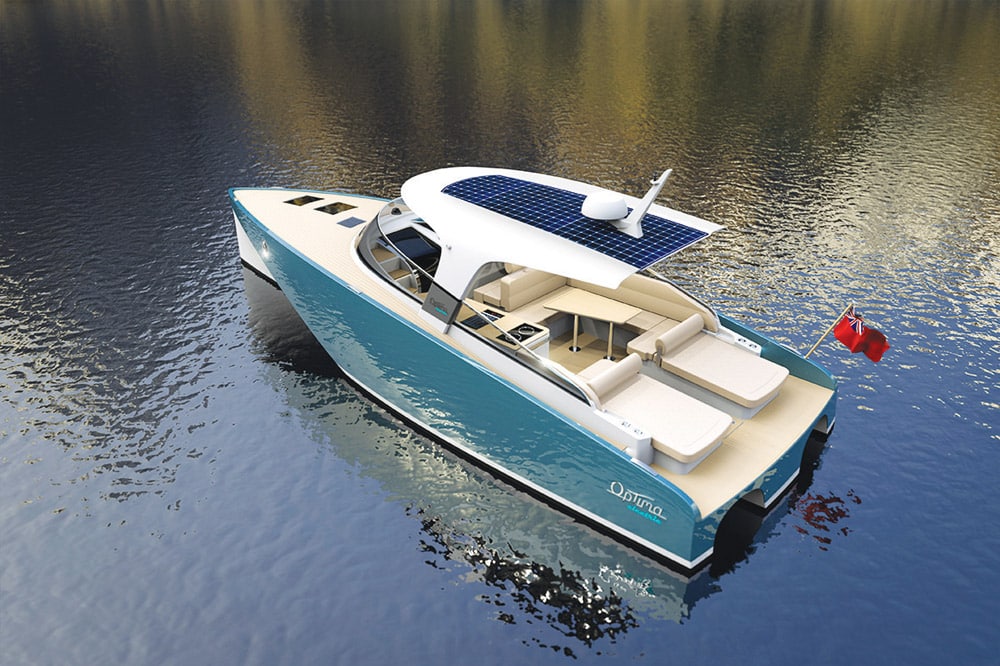
The first 10m Optima will be launched in early 2023 and has a radical hull design.
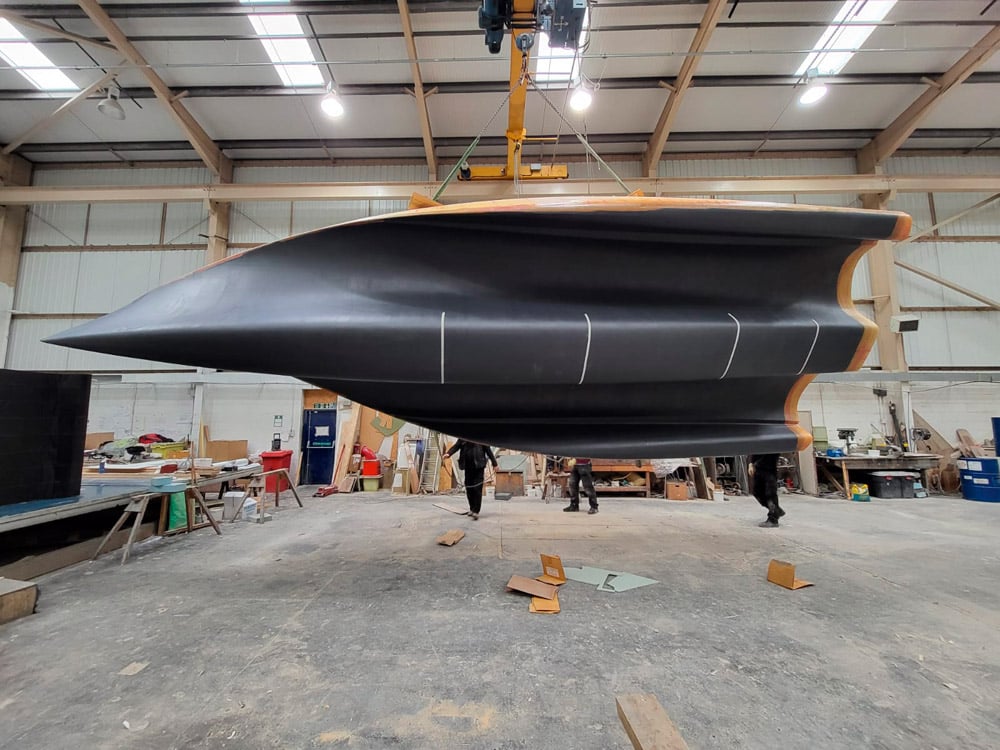
The first 10m Optima will be launched in early 2023 and has a radical hull design.
Last but not least
Other exhibitors included the locally based Suncy Concept, Monaco, which displayed its 6.4m Suncy Tzeo solar-powered electric day launch capable of taking up to 10 people. The Monaco-based company SBM Offshore displayed a pontoon that produces green hydrogen from renewable energy, including floating photovoltaic panels. The hydrogen was subsequently used to refuel the SBM E-Racing Team’s boat when it competed in the Energy class. The distinctive single-seat all-electric foiling race boat prototype E1 also made an appearance. The 7m craft is due to participate within the UIM E1 World Championship, which is scheduled to start in 2023, and is powered by a Mercury Racing electric motor capable of delivering a peak power output of 150kWh to reach a top speed of 50 knots.
As the countdown to the 10th Monaco Energy Boat Challenge begins, many of this year’s competitors and exhibitors are already burning the midnight oil to refine their entries for next year’s event, which will be held from 3rd to 8th July 2023.
For further information see www.energyboatchallenge.com.
Photography by Carlo Borlenghi & luca butto – courtesy of yacht club de monaco – www.energyboatchallenge.com

